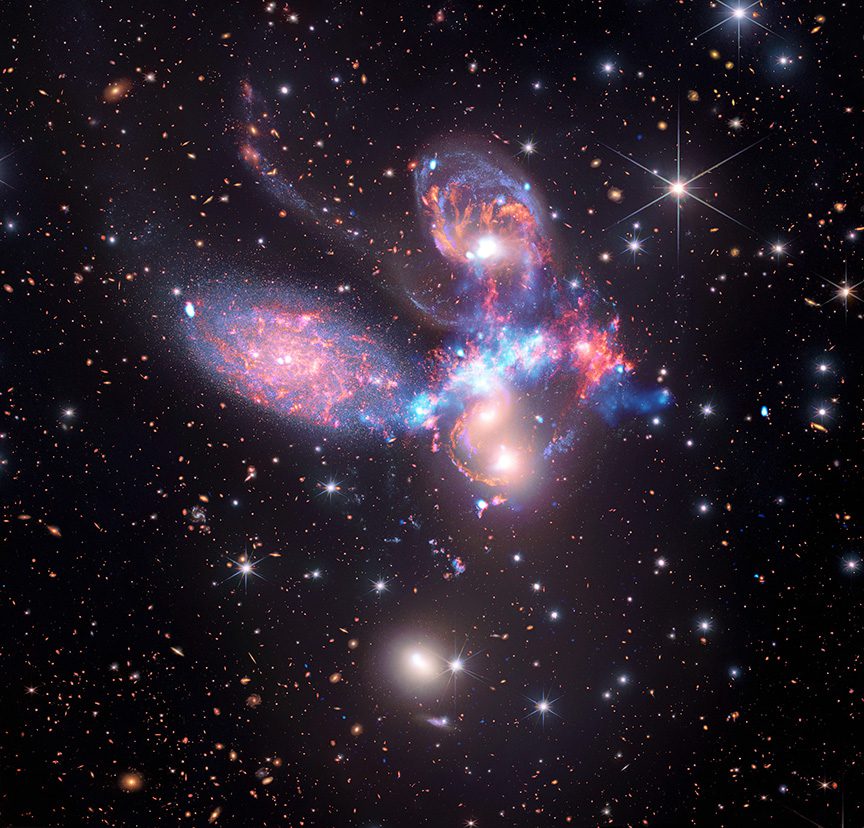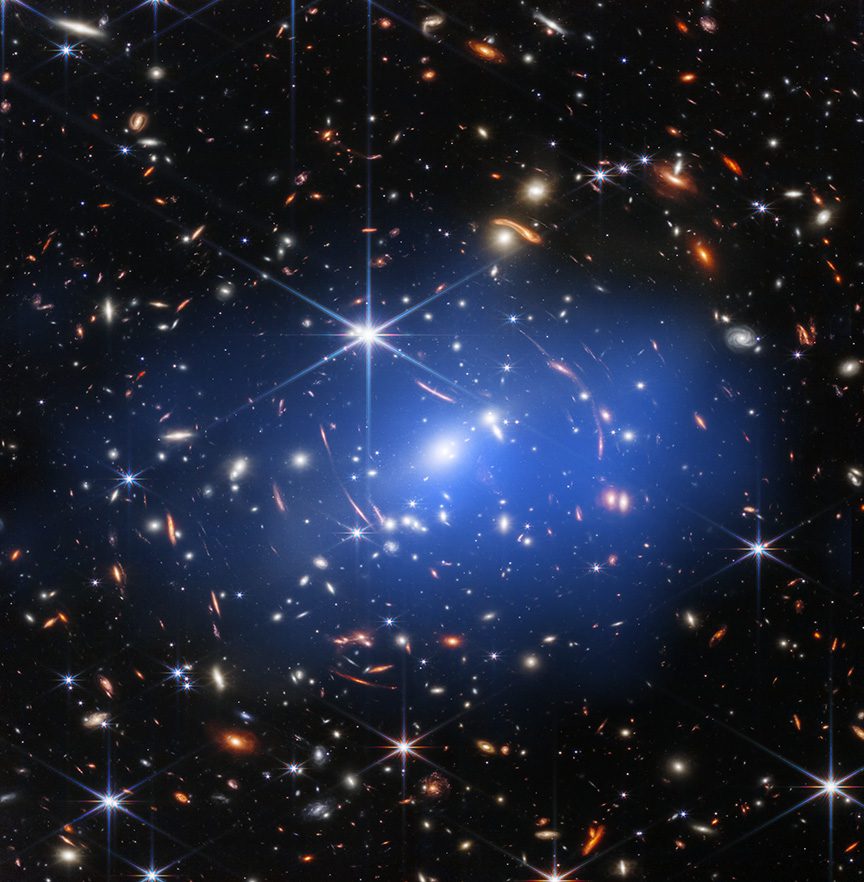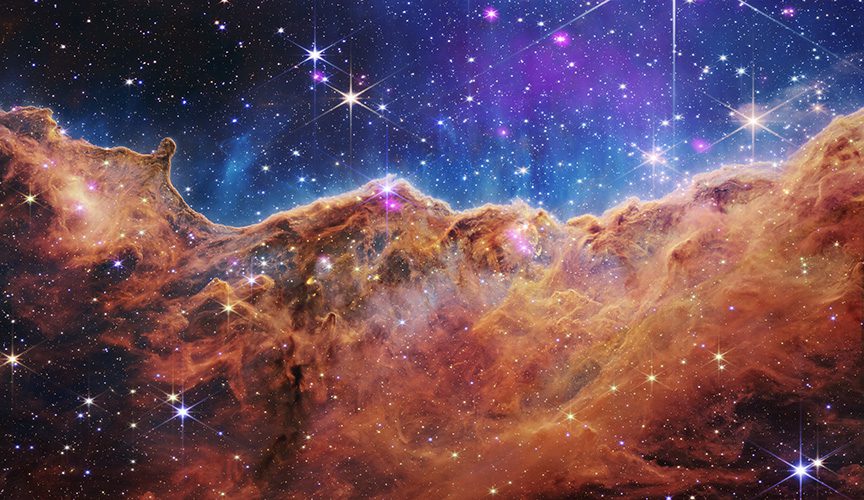Some of the first images captured by JWST have been given a revamp with the help of data from NASA’s Chandra X-ray Observatory – and they might just be some of the prettiest pictures yet.
The newly released psychedelic images are the product of combining JWST’s infrared vision with the X-ray vision of Chandra. Not only are they visually stunning, but this collaboration has also spotlighted some new astronomical features that haven’t been appreciated before.
One of the images (seen above) showcases the Cartwheel galaxy, a galaxy some 500 million light-years away that acquired its distinctive shape from a collision with another smaller galaxy about 100 million years ago.
Chandra’s X-rays can be seen in blue and purple, illustrating the galaxy’s superheated gas, neutron stars, and black holes pulling material from companion stars. Meanwhile, the infrared data of JWST is shown in red, orange, yellow, green, and blue, which highlights its two smaller companion galaxies and the broader backdrop of other distant galaxies.

Composite image of Stephan’s Quintet using JWST and Chandra data. Image credit: X-ray: NASA/CXC/SAO; IR (Spitzer): NASA/JPL-Caltech; IR (Webb): NASA/ESA/CSA/STScI
Another shot (above) shows the unusually shaped Stephan’s Quintet, a compact galaxy group formed of five galaxies. This latest image depicts show never-before-seen details of this heavily studied galaxy.
Here, JWST’s data (shown in red, orange, yellow, green, blue) shows sweeping tails of gas and bursts of star formation. The Chandra data (light blue) also uncovered a shockwave of superheated gas created by the galaxies passing through the others at around 3.2 million kilometers (2 million miles) per hour.
The image of Stephan’s Quintet also used older infrared data from NASA’s now-retired Spitzer Space Telescope (red, green, blue).

Composite image of galaxy cluster SMACS J0723 using JWST and Chandra data. Image credit: X-ray: NASA/CXC/SAO; IR (Spitzer): NASA/JPL-Caltech; IR (Webb): NASA/ESA/CSA/STScI
Next, we see the galaxy cluster SMACS J0723 (image above), found about 4.2 billion light-years away. Galaxy clusters like this contain tons of superheated gas, as shown in blue by Chandra’s data at the center of the image.
Last but not least, there is the image (below) NGC 3324, aka the Cosmic Cliffs of the Carina Nebula, a vast strand of gas and dust where stars are being born. JWST released a gorgeous color image of this nebula in July 2022, but Chandra’s data reveals some new X-ray sources (pink). Young stars’ X-rays are much brighter than old stars, giving astronomers an idea of when they might have formed.

Composite image of the Carina Nebula using JWST and Chandra data. Image credit: X-ray: NASA/CXC/SAO; IR (Spitzer): NASA/JPL-Caltech; IR (Webb): NASA/ESA/CSA/STScI
Source Link: X-Ray Vision Makes JWST's Shots Of The Cosmos Even More Beautiful